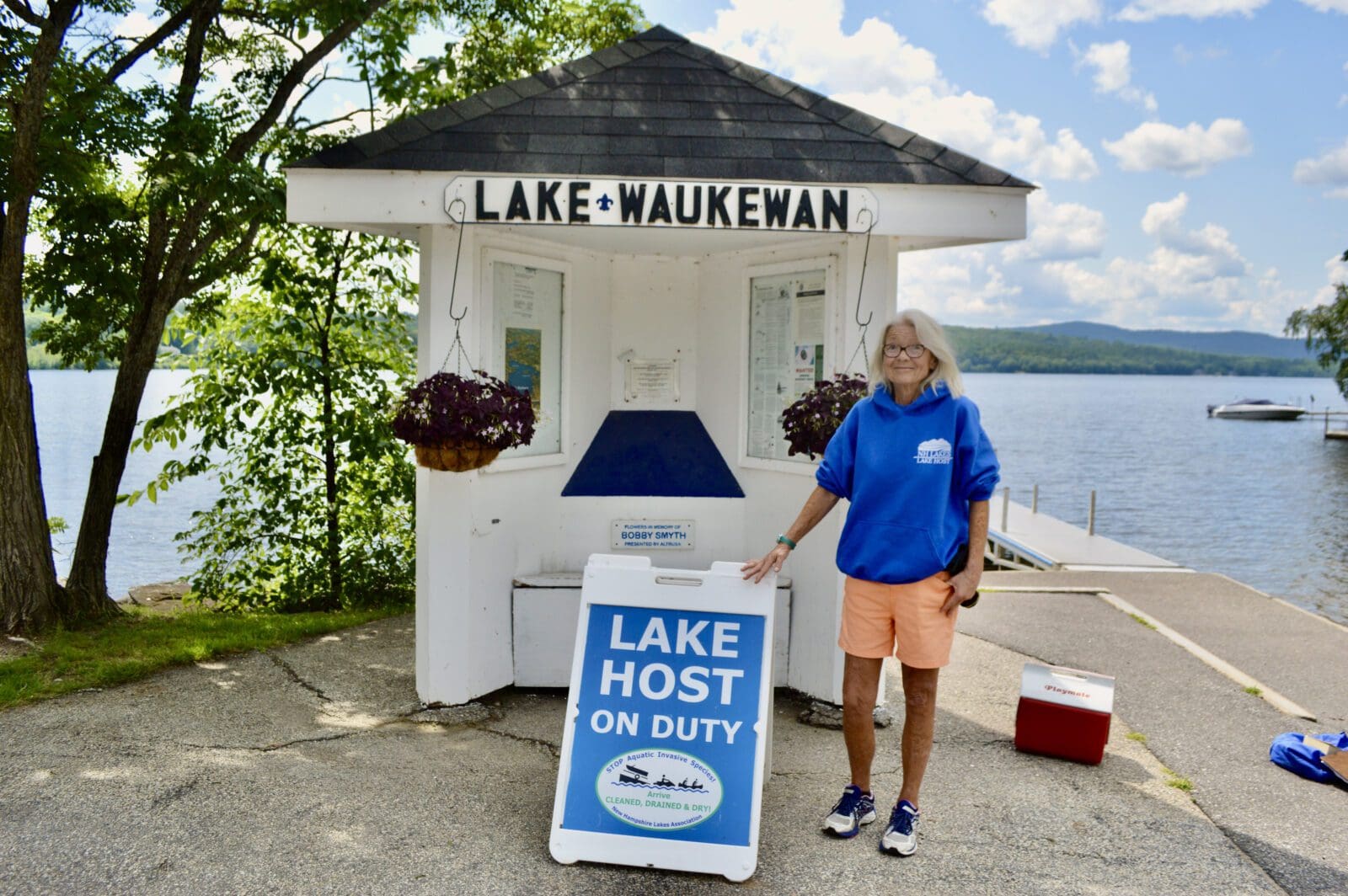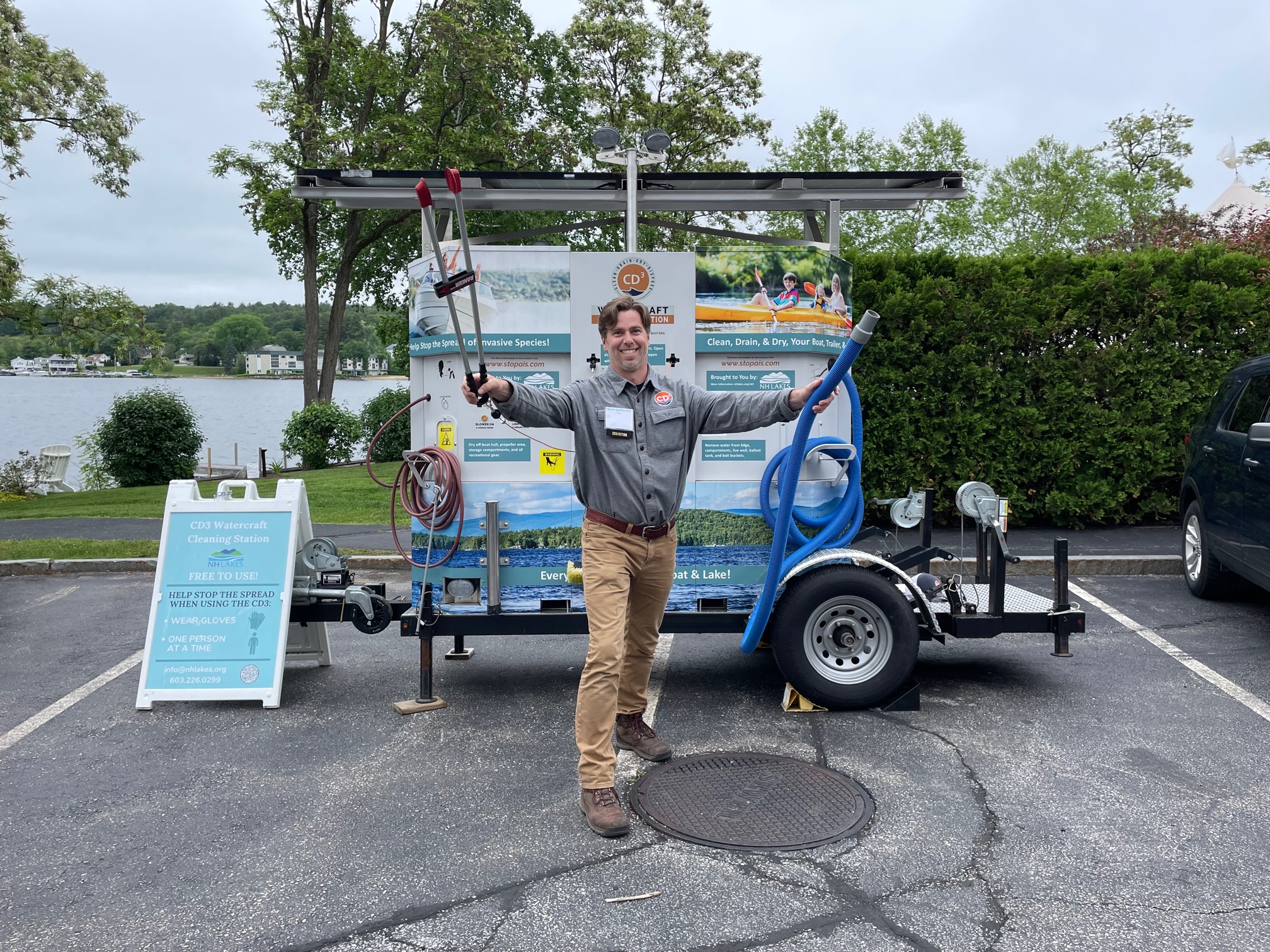Clean. Drain. Dry.
You Can Stop the Spread!
New Hampshire has almost 1,000 lakes and over 40,000 miles of rivers and streams. They are critical natural resources. Sadly, aquatic invasive species like variable milfoil and Asian clams harm these waterbodies. These species make boating, swimming, and fishing areas dirty and less enjoyable, decrease property values, and hurt tourism. They crowd out native plants and animals, and expensive to manage, and are almost impossible to remove once they take hold.
That’s why we need people, like you, in addition to our own efforts, to prevent them in the first place.
You can pull the plug on the spread of invasive plants and animals with three easy steps! :

Before leaving any boat launch area:
CLEAN.
- Clean off all mud, plants, animals, and debris from your boat, trailer, and equipment.
- Clean off anchors and anchor lines, water intake grates on jet-powered craft, kayak and canoe cockpits, storage compartments, and paddles!
- Please dispose of all material away from the waterbody where it won’t wash back into the lake.
- Cleaning is the law in New Hampshire!
DRAIN.
- Drain the motor, bilge, live wells, ballast tanks, storage compartments, and gear.
- Blow out water in jet-powered craft.
- Tip paddle craft and motors to let out water.
- Drain all equipment where runoff won’t flow back into the lake.
- OPEN/REMOVE drain plugs and keep out/open while trailering. You may need a wrench to remove your plugs.
- Draining is the law in New Hampshire!
DRY.
- Let your watercraft dry outside in the sun for five days.
- Dry off everything that came into contact with the water.
- If relaunching your boat within five days, thoroughly rinse with clean water somewhere runoff won’t flow back into the lake and towel dry.
Between visiting waterbodies:
RINSE:
- It is the gold standard to rinse with high-pressure hot water before launching again, especially if the boat has been in a waterbody containing an invasive species.
- You can visit a carwash to rinse the boat hull and trailer with clean water and flush the motor, bilge, live wells, ballas tanks, and storage compartments with clean water per the boat manufacturer’s instructions.
See which waterbodies in New Hampshire have a confirmed aquatic invasive species infestation by clicking here.
Invasive Species Prevention Initiatives

Lake Host Program
Clean water, happy wildlife, and stable property values depend on a healthy lake, free of invasive species. The NH LAKES Lake Host Program is the first line of defense in protecting our lakes from invasive plants and animals.
Watercraft Cleaning Unit
Our mobile, solar-powered CD3 is visiting public boat ramps throughout the state, helping boaters prevent the spread of invasive species. NH LAKES has deployed the first waterless watercraft cleaning unit in the Northeast—the CD3 Clean, Drain, Dry & Dispose Unit!


 by NH Rocks
by NH Rocks